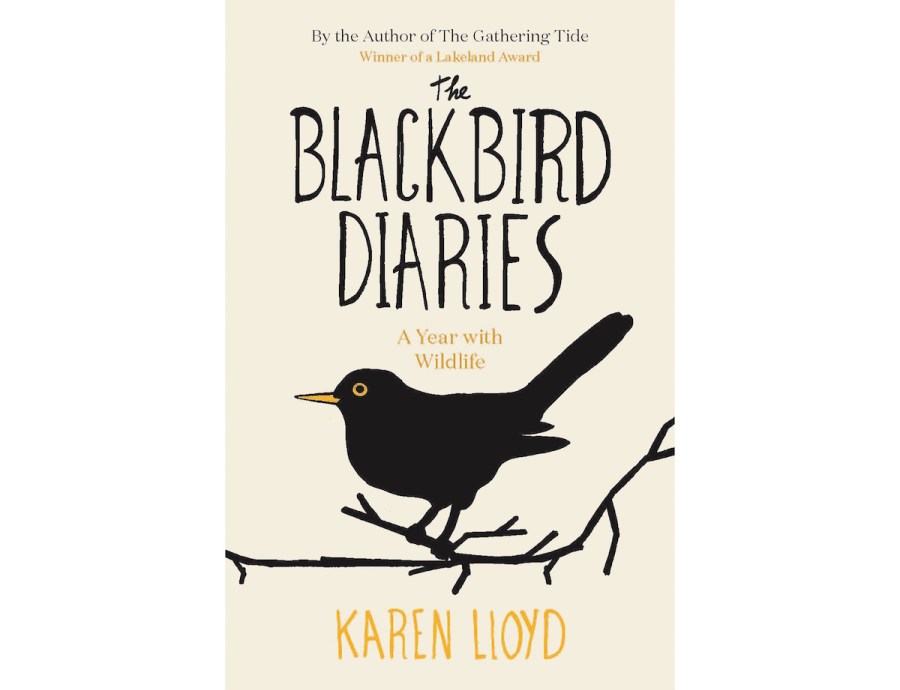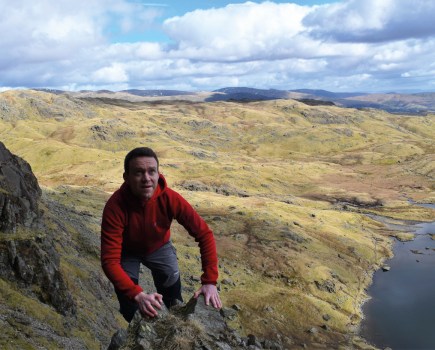Launching at the Kendal Mountain Festival, this new book is a personal exploration of the wildlife in and beyond one Cumbrian garden
Karen Lloyd is a writer of non-fiction and poetry based in Kendal, Cumbria. She is a contributor to the Guardian Country Diary, has written for the Family section of the Guardian and is a features writer for BBC Countryfile Magazine.
Her new book, The Blackbird Diaries: A year with wildlife, is a ‘celebration of landscapes that rarely feature in the existing canon of nature writing, and rare insights into the lives of the species that may be common, but are remarkable creatures all.’
It’s our pleasure to publish this exclusive extract from the book. Don’t forget to come along to the book launch at the Kendal Mountain Festival (17 November, 19.00).
November 23
The first frosts arrived towards the end of the month. I set out early with Fiona for the new hide overlooking Brigsteer wetlands. Driving along the lane from Levens toward Brigsteer, Fi told me of her concerns about a new tenant farmer, how the retiring farmer had been a friend to the hedgerows, encouraging birdlife. Nothing in this landscape is constant, nor can it be taken for granted.
We parked the car and walked the narrow road through Brigsteer Woods. Fi pointed out two whinberry bushes in amongst the winter trees. The pendulous, star-anise-shaped berries were bright pink, the last of the blackberry foliage intertwined amongst the thin stems. We walked the field path towards the cedar-clad hide as a buzzard lifted from beyond the sheltering line of sedge. It lifted on lazy wingbeats into the freezing air.
At this edge of the Lyth Valley, former peat-cutting areas had been purposefully flooded, creating a new wildlife haven. We looked out at a vast flock of teals, numerous mallards, coots, wigeons and a pair of mute swans with two juveniles. Written up on the noticeboard inside were recent sightings that included (excitingly) a bittern, marsh harriers, peregrines, little egrets and kingfishers. In the spring, the waders come in to take advantage of the easy feeding the wet ground provides – curlews, lapwings, snipe.
We settled in to watch. The surface was frozen in patches of ice and interspersed with open water. A coot broke cover and ran delicately across the icy skin before disappearing into sedge. A buzzard mewed, unseen. Then, rounding from behind the dark trees of Colley Green Wood, a group of mute swans came into sight, travelling low against the green flanks of Whitbarrow and passing across the darker ground of the Crosthwaite hills. We counted ten, their white forms evanescing in the cold air, and they spooked a flock of black-headed gulls that rose as one into the sky and dispersed like shreds of paper blown by the wind. Then the waterscape settled, just the ongoing cackle of the mallards underscoring all the other quiet comings and goings of birds.
Focusing on the wood behind which the swans had appeared, there were birch and oak, ash and sycamore, and just a tinge of copper gilding the domes of the taller trees – the very last of the season’s leaves. Smaller birches crowded in amongst their neighbours, and in the subdued light, the distinct purple mass of next year’s buds appeared velvety, like an animal pelt covering the trees.
It was cold inside the hide, freezing cold. We should have brought a flask. Fi sketched, commenting in her inimitable way on the colours, the light, the life of the place. Ducks upended, pointing their white rumps, like cartoons of duck bottoms, towards the sky. Swan families floated past like small, elegant galleons, occasionally upending, or dabbling in the water. Later, leaving the hide, a red-brown kestrel glided over the water, coming to rest high up in a hawthorn, the last of the berries bright below.
Karen Lloyd’s The Blackbird Diaries: A year with wildlife is published by Saraband on 16th November (£12.99, hardback)








